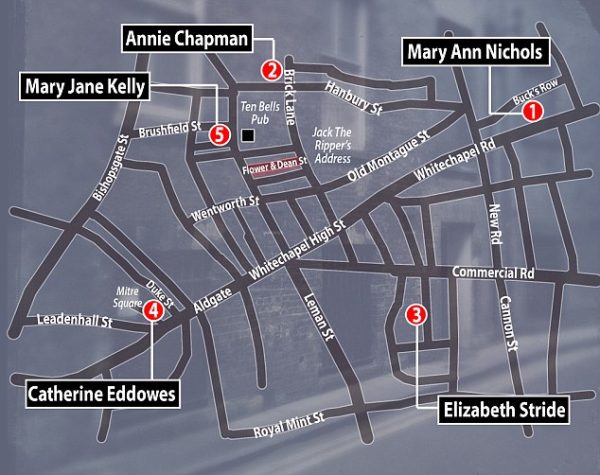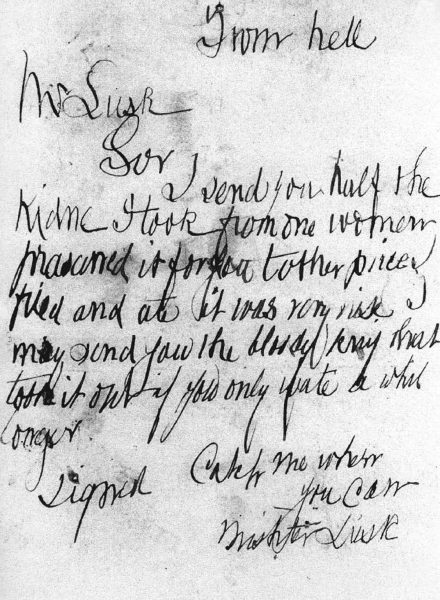Jack the Ripper is an alias that is synonymous with the many serial killers in history. It has been a name shrouded in mystery, horror, and fascination ever since the late 1880s when he murdered at least five women in London, England in a notorious brutal way. Now, the year is 2025, and after 137 years, the identity of the killer has finally been identified!
In 1888, in London’s once impoverished Whitechapel district, five women were brutally murdered separately. Their bodies were horrifically mutilated with a knife in distinctive ways that terrified the minds of everyone in London at the time, such as deep slashes to the throat, removal of organs, and abdominal mutilation, giving people the suspicion of the murderer having medical knowledge.
The thing that made Jack the Ripper so notorious was the amount of unknowns. Between 1888 and 1891, the deaths of 11 women in or around the Whitechapel district of the East End of London were linked in a single police investigation known as the “Whitechapel murders.” Seven of the victims suffered a slash to the throat, and in four cases the bodies were mutilated after death. Five of the cases, between August and November 1888, show such marked similarities that they are generally agreed to be the work of a single serial killer, known as “Jack the Ripper”.

Five women have primarily been attributed to the hands of Jack the Ripper, Mary Ann Nichols (August 31, 1888), Annie Chapman (September 8, 1888), Elizabeth Stride (September 30, 1888), Catherine Eddowes (September 30, 1888), and Mary Jane Kelly (November 9, 1888), who are known as the “Canonical Five;” however, there is still speculation that the Ripper is responsible for the many other murders. The situation was made far more complicated as people attempted to provoke even more fear in the public by pretending to be the Ripper with fake letters and graffiti.
There are two notable letters;
however, the ‘Dear Boss’ letter, where the writer claimed to be the serial killer and signed “Jack the Ripper” at the bottom. This letter gave Jack the Ripper his famous alias, as all the local newspapers began using the name like wildfire, helping make the serial killer a lasting legend.

While this letter simply gave the serial killer his famous name, the only letter that is very likely to have been from Jack the Ripper, was the “From Hell” letter. This letter was sent to George Lusk, the Chairman of the Whitechapel Vigilance Committee during the Whitechapel murders. The letter contained half of a human kidney (the previous murder victim of Jack the Ripper, Catherine Eddowes, was missing half of her kidney) and at the top was labeled ‘from hell.’
In case you are curious, the transcript is as follows, “From Hell, Mr. Lusk, Sir, I send you half [of] the kidney I took from one woman [and] preserved it for you, [the other] piece I fried and ate, it was very nice. I may send you the bloody knife that took it out if you only wait a while longer. Signed, catch me when you can. Mister Lusk.” The original letter had no punctuation nor accurate spelling, potentially revealing more about who Jack the Ripper was. The original letter is on the right (all this information can be found on JacktheRipper.org).

Unfortunately, this monster of a human was never caught for his crimes despite the sheer brutality of his murders, as he committed these murders mere years before DNA investigation began to be used as a means of identifying criminals. Jack the Ripper also served as fuel for finding new methods of identifying criminals so something so brutal could never happen again.
Ironically, the very thing that didn’t exist and likely allowed for his easy escape from punishment also served as the thing that finally brought his name forward. In 2007, Jack the Ripper historian Russell Edwards bought the shawl of Catherine Eddowes in an auction and immediately began investigating.

Although there has been skepticism about the authenticity of the shawl and of the research in general, over the years Russell Edwards and Dr. Jari Louhelainen began pinning the murders to a man named Aaron Kosminski, and in recent months, with confirmation of DNA connection to a relative of Catherine Eddowes and the great great granddaughter of Aaron Kosminski’s brother, Edwards believes the culprit has finally been found.
Aaron Kosminski, born September 11, 1865, in Kłodawa, Poland, immigrated to England sometime in the early 1880s with his family to escape anti-Semitic persecution, pogroms, and economic hardship in Eastern Europe. By the early-to-mid 1880s, he lived in London’s Whitechapel District and worked locally as a barber and hairdresser. It is also important to note that barbers, at the time, were also response for some medical procedures; this might explain the anatomical knowledge that Jack the Ripper allegedly possessed.
However, Aaron Kosminski was known as a suspect by the local law enforcement and investigators, as Kosminski had severe paranoid schizophrenia and had allegedly been mentioned in witness statements; however, he was never investigated more due to lack of evidence. Chief Inspector Donald Swanson had a huge suspicion of Kosminski, as Swanson, who wrote personal notes on a coworker, Sir Robert Anderson’s memoir, stated that Kosminski had a “great hatred of women” and “strong homicidal tendencies.” Sir Melville Macnaghten, the Assistant Chief Constable, wrote in an 1894 report that Kosminski had strong homicidal tendencies and was “known to carry a knife.” Posing as some of the only evidence that has a semi-strong claim.
Thankfully, while Aaron Kosminski never faced justice for his crimes, he would later be committed to Colney Hatch Lunatic Asylum in 1891 and later transferred to Leavesden Asylum in 1894, where he remained until his death in 1919.
However, the findings of Edwards continue to be questioned by many, as many records suggest that Kosminski is not the right person. Asylum records suggest that although he was mentally ill, he was very “well-behaved”, and many people question the authenticity of the shawl that has found a DNA link between Kosminski and Catherine Eddowes.
While there still seems to be much speculation about the Whitechapel murders that happened between 1888 and 1891, and the identity of Jack the Ripper will likely never be definitively identified, the fact that a suspect of the time was committed to an asylum at the same time the Whitechapel murders stopped and has been connected to the murders of Catherine Eddowes through DNA analysis leaves it as very likely that Aaron Kosminski is the man who was behind those brutal murders of the late 1880s.
Photo courtesy of Daily Mail, Badische Zeitung, and South China Morning Post.








